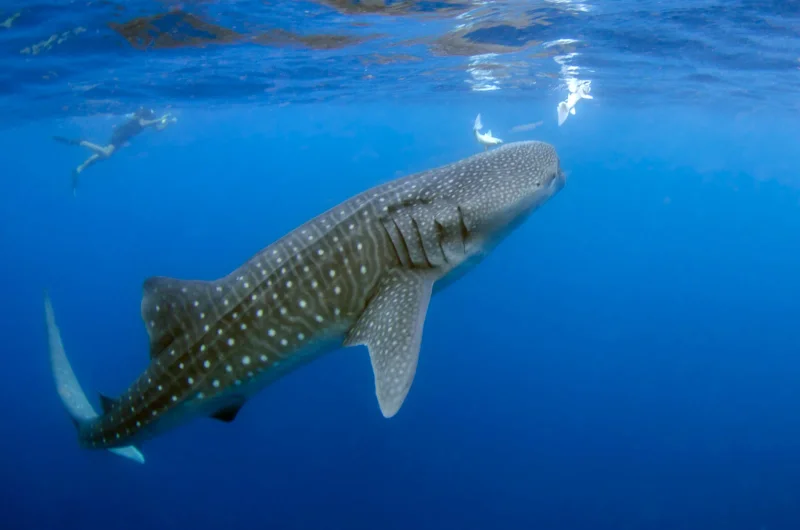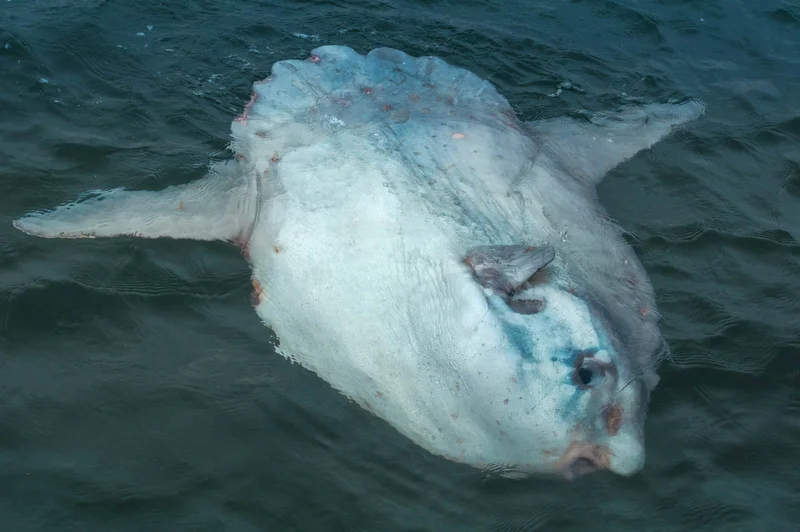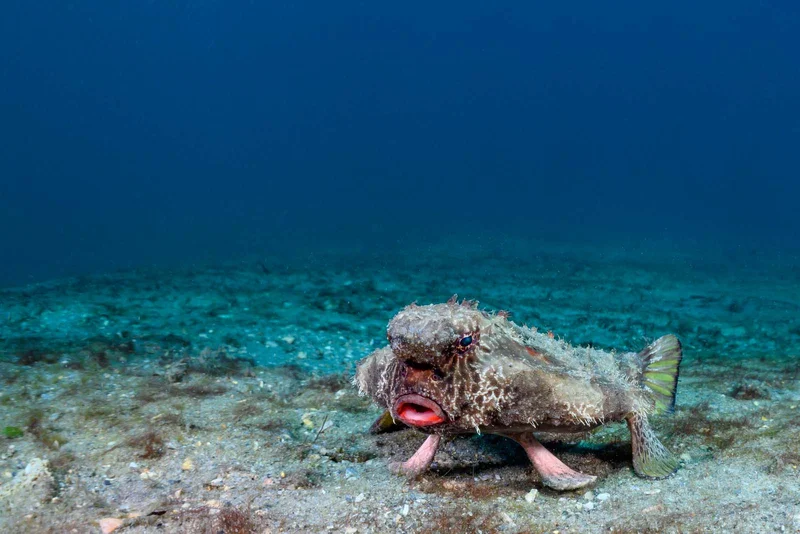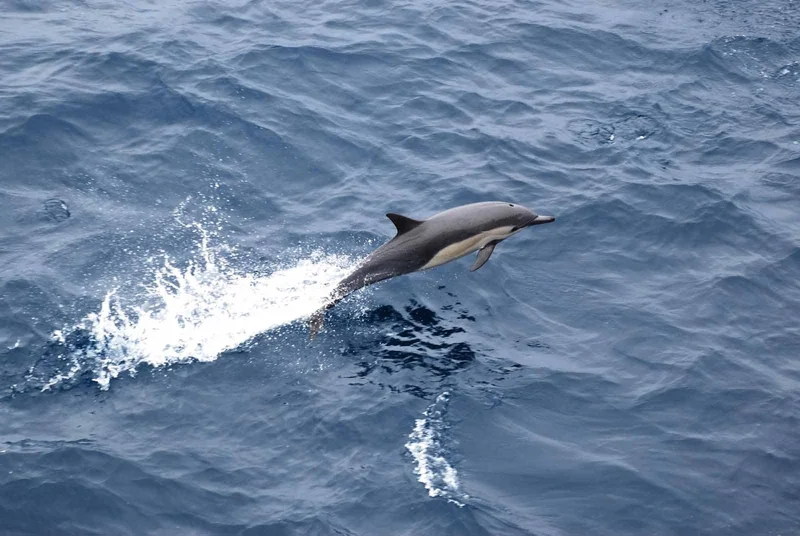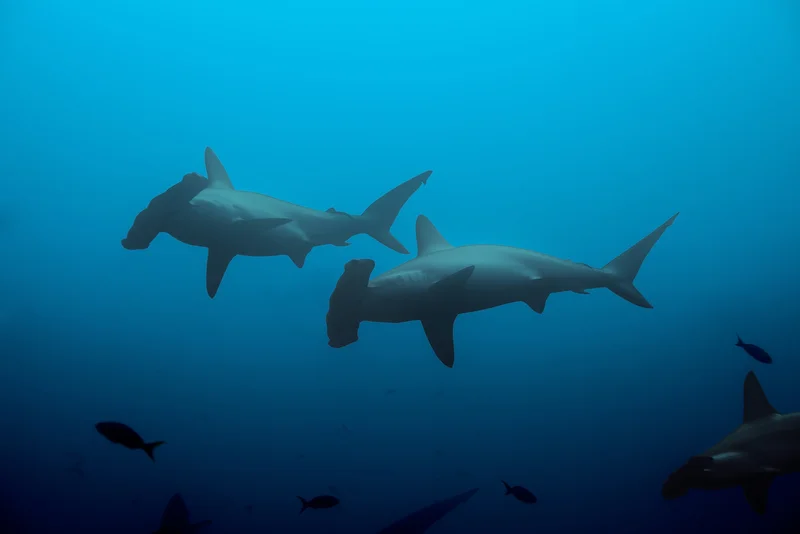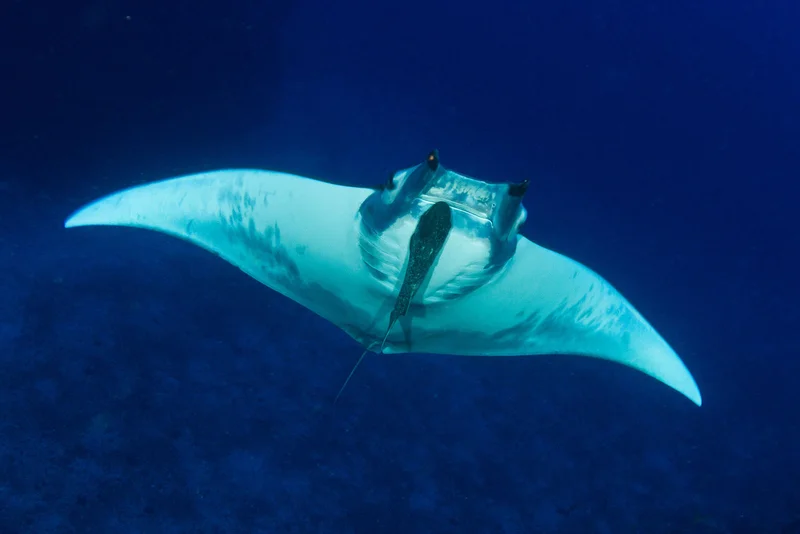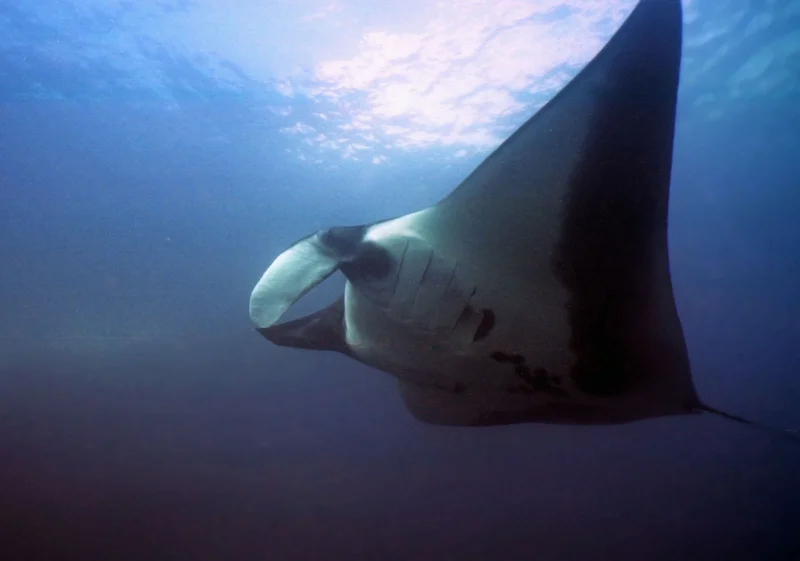Essential Information on the Galapagos Sting Rays
Several types of rays are frequently spotted in the waters around the Galápagos Islands. They are often seen while kayaking, snorkeling, or on panga excursions in the clear water. If you're on a diving cruise, you might get a close view of these graceful creatures. Rays in the Galápagos can frequently be observed from the cliffs of South Plaza Island, from the shores of Rabida Island, or in quiet lagoons surrounded by mangrove forests. The archipelago is home to several resident varieties:
Golden Rays, named for their golden-colored tops, can be recognized by their blunt heads and long, whip-like tails. They vary in size, typically ranging from 3 to 4 feet across. While Golden Rays are often seen individually at Galápagos dive sites, they can also form large schools in calm, shallow lagoons, with Black Turtle Cove on Santa Cruz Island being a prime spot to witness these groups.
Spotted Eagle Rays are characterized by their pointed heads and long tails with spiny tips, along with distinctive white spots on their black tops. In the Galápagos, they are frequently found in large schools in smaller lagoons like Black Turtle Cove and sometimes off the coast of Floreana Island while snorkeling.
Stingrays are common in the shallow beach areas and sandy bottoms throughout the Galápagos. These gray rays have a long, narrow tail ending in a sharp stinger. They vary in size and shape, with some reaching a 5-foot wingspan. Stingrays are often seen resting on the seabed in shallow snorkeling spots and occasionally among the waves of Post Office Bay on Floreana Island.

